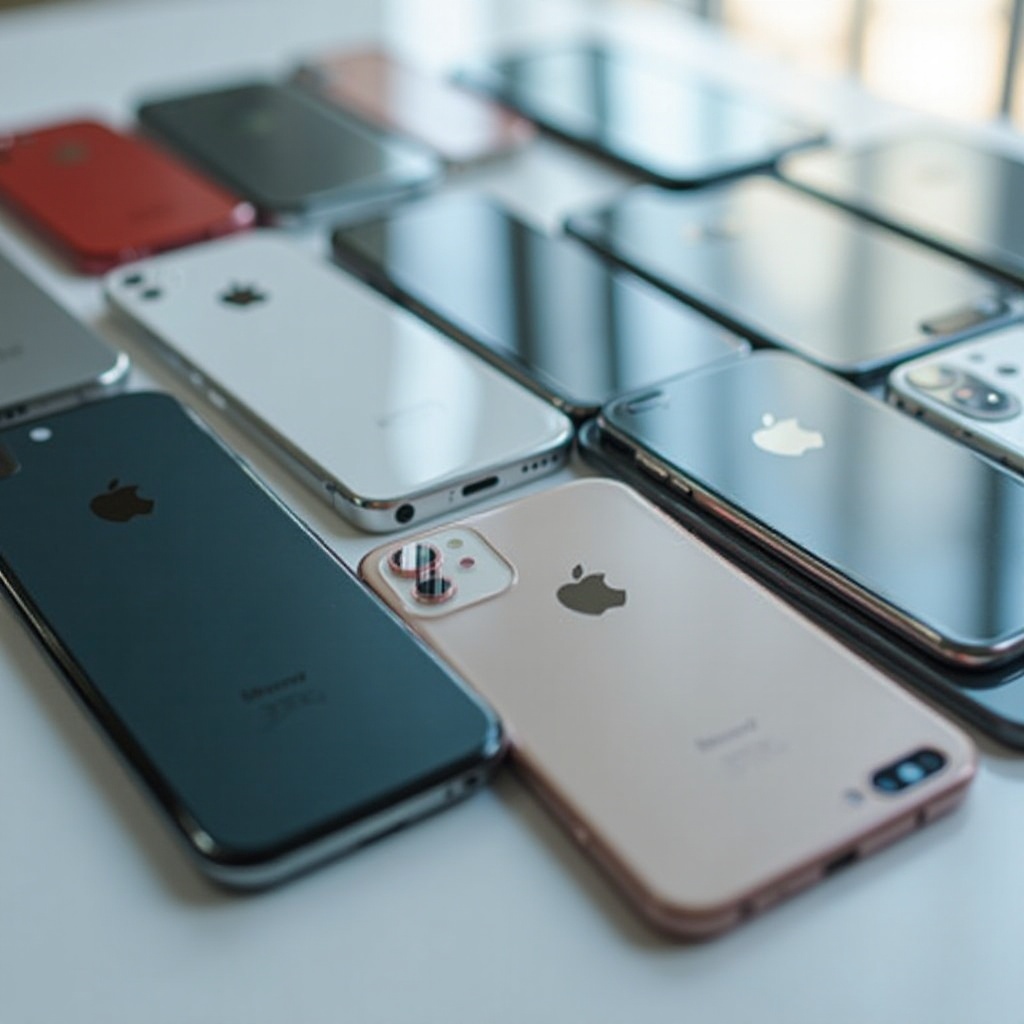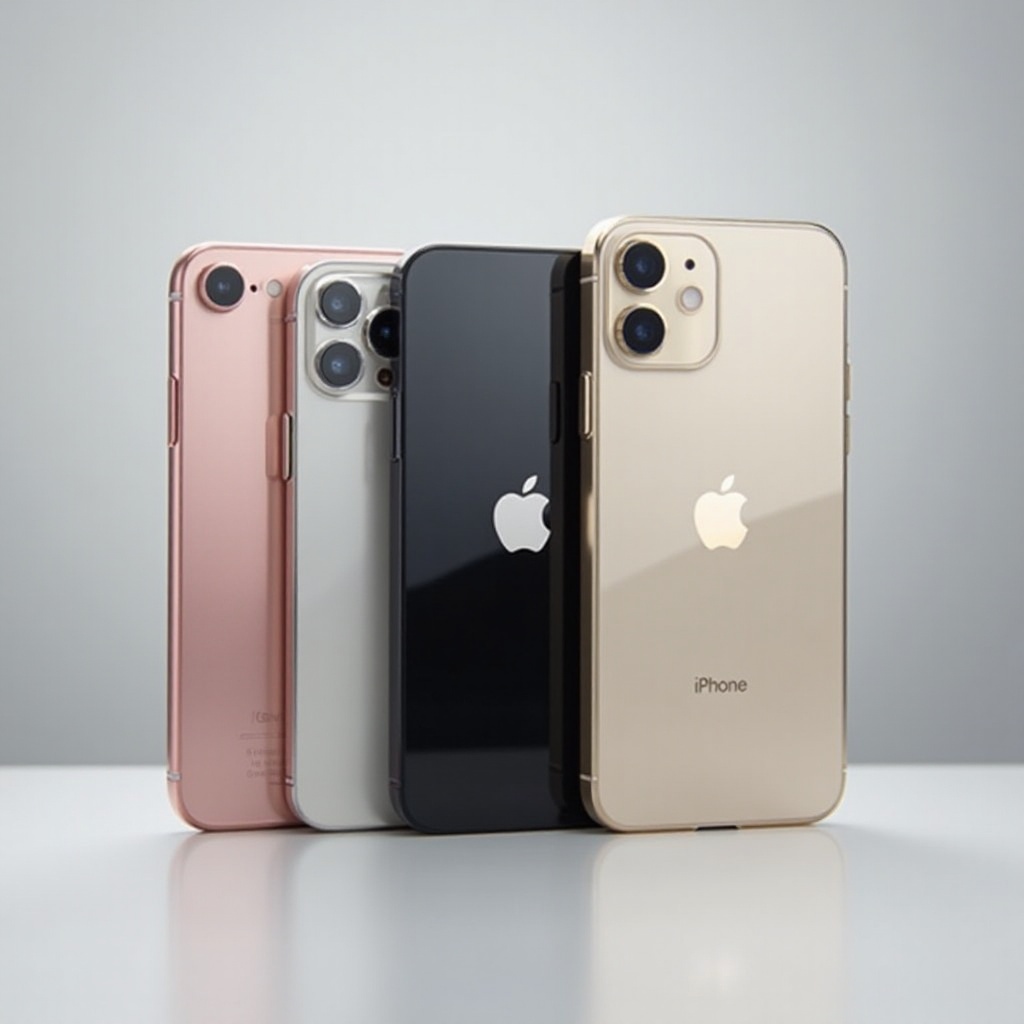Introduction
Apple’s design philosophy has always emphasized innovation and aesthetics, making each new iPhone model a subject of anticipation and intrigue. With the adoption of glass backs, iPhones have taken a step towards blending style with utility, notably enhancing wireless charging capabilities. This guide will explore which iPhones boast a glass back and delve into the reasons behind this elegant design choice.

The Evolution of iPhones with Glass Backs
Apple’s journey to perfect the use of glass in its smartphones began with the initial models that laid the groundwork for today’s sophisticated designs.
The Introduction of Glass Material in iPhone Design
When Apple introduced the iPhone 4, it marked the company’s first major use of glass in its smartphone lineup. This model’s glass design aimed to revolutionize aesthetics and functionality, paving the way for future innovations. Although early models faced challenges with durability, Apple remained committed to refining the use of glass.
Latest Models Featuring Glass Backs (2024 and Beyond)
In recent years, Apple’s flagship models, including those launched in 2024, have consistently featured glass backs. This continuous integration underscores Apple’s dedication to innovation and design perfection. The inclusion of advanced materials ensures that these devices stand out not just in appearance but also in performance.
The transition of glass into mainstream design improved aesthetic appeal and functionality, leading to richer user experiences.
Advantages of Glass Backs in iPhones
The decision to utilize a glass back in iPhone design is steeped in practical and aesthetic advantages, providing users with enhanced device interactions.
Aesthetic Appeal and Design Benefits
The implementation of glass allows Apple to offer more vibrant color options and a sleek, luxurious finish. This visual appeal not only enhances the phone’s marketability but also elevates user satisfaction. Indeed, consumers consistently report high satisfaction with the premium look and feel.
Functional Advantages: Wireless Charging and More
Glass backs are instrumental in enabling wireless charging, a feature increasingly demanded by modern users. Unlike metal, glass does not interfere with electromagnetic fields, facilitating seamless wireless power transfer. Additionally, glass backs support better antenna reception, further enhancing connectivity and overall device efficiency.
The Technology Behind iPhone Glass Backs
The shift to glass has not only been a design choice but also a technological feat, integrating innovative materials and engineering processes.
Materials Used: Gorilla Glass and Ceramic Shield
Apple’s use of robust materials like Gorilla Glass and Ceramic Shield showcases a commitment to durability and performance. These materials minimize scratches and offer superior protection against impacts.
Innovations in Durability and Manufacturing Techniques
Apple employs cutting-edge manufacturing techniques, such as ion-exchange processes, to enhance glass toughness. These innovations ensure that the glass back can withstand daily wear and tear, maintaining its glossy finish over time.
With these technological advancements, Apple counterbalances the inherent fragility of glass, making it a viable material for everyday use.

Challenges and Considerations
Despite their advantages, glass backs introduce certain vulnerabilities that users should be aware of when handling their devices.
Fragility and Repair Costs
One of the main downsides to glass is its tendency to shatter when dropped, which can result in costly repairs. Users are often troubled by the fragility associated with glass backs, especially when compared to metal counterparts.
Protective Measures and Maintenance Tips
To protect your glass-backed iPhone, invest in a quality protective case that absorbs shocks and shields against impact. Regular cleaning with appropriate, non-abrasive solutions will also help maintain the glass’s pristine appearance and reduce smudging.
These protective practices enable users to enjoy the benefits of glass while minimizing risks associated with its use.
Comparing Glass Backs with Other Materials
Understanding the dynamics between different materials provides insight into why Apple has gravitated towards glass backs.
Glass vs. Metal Designs
While metal is known for its strength and resilience, it lacks the finesse and wireless charging compatibility that glass offers. Although metal can impart a solid feel, the limitations in color and design flexibility are notable.
Glass vs. Plastic Designs
Plastic, while cost-effective and durable, fails to match the premium feel and aesthetic appeal of glass. Glass provides a more sophisticated look, satisfying consumers seeking high-end design elements.

Conclusion
Incorporating glass backs into iPhone models represents a strategic blend of beauty and utility. As Apple continues to innovate, these design choices are poised to evolve, offering even greater benefits to users across the globe.
Frequently Asked Questions
Which recent iPhone models feature a glass back?
All flagship iPhones from the iPhone 12 onwards, including the latest 2024 models, feature a glass back.
How does the glass back affect the phone’s weight and handling?
Glass adds a premium feel without significantly increasing the weight, offering a balanced handling experience.
What are the best ways to protect an iPhone with a glass back?
Using a quality protective case and applying a screen protector are effective ways to protect your iPhone’s glass back. Regular cleaning can prevent scratches and smudges.
